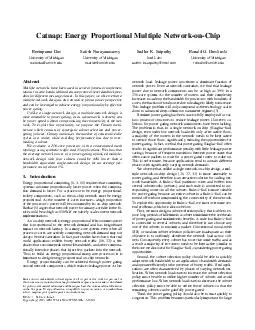PDF-Catnap Energy Proportional Multiple NetworkonChip Reetuparna Das University of Michigan
Author : giovanna-bartolotta | Published Date : 2015-03-03
edu Satish Narayanasamy University of Michigan nsatishumichedu Sudhir K Satpathy Intel Labs sudhirksatpathyintelcom Ronald G Dreslinski University of Michigan rdreslinumichedu
Presentation Embed Code
Download Presentation
Download Presentation The PPT/PDF document "Catnap Energy Proportional Multiple Netw..." is the property of its rightful owner. Permission is granted to download and print the materials on this website for personal, non-commercial use only, and to display it on your personal computer provided you do not modify the materials and that you retain all copyright notices contained in the materials. By downloading content from our website, you accept the terms of this agreement.
Catnap Energy Proportional Multiple NetworkonChip Reetuparna Das University of Michigan: Transcript
Download Rules Of Document
"Catnap Energy Proportional Multiple NetworkonChip Reetuparna Das University of Michigan"The content belongs to its owner. You may download and print it for personal use, without modification, and keep all copyright notices. By downloading, you agree to these terms.
Related Documents














